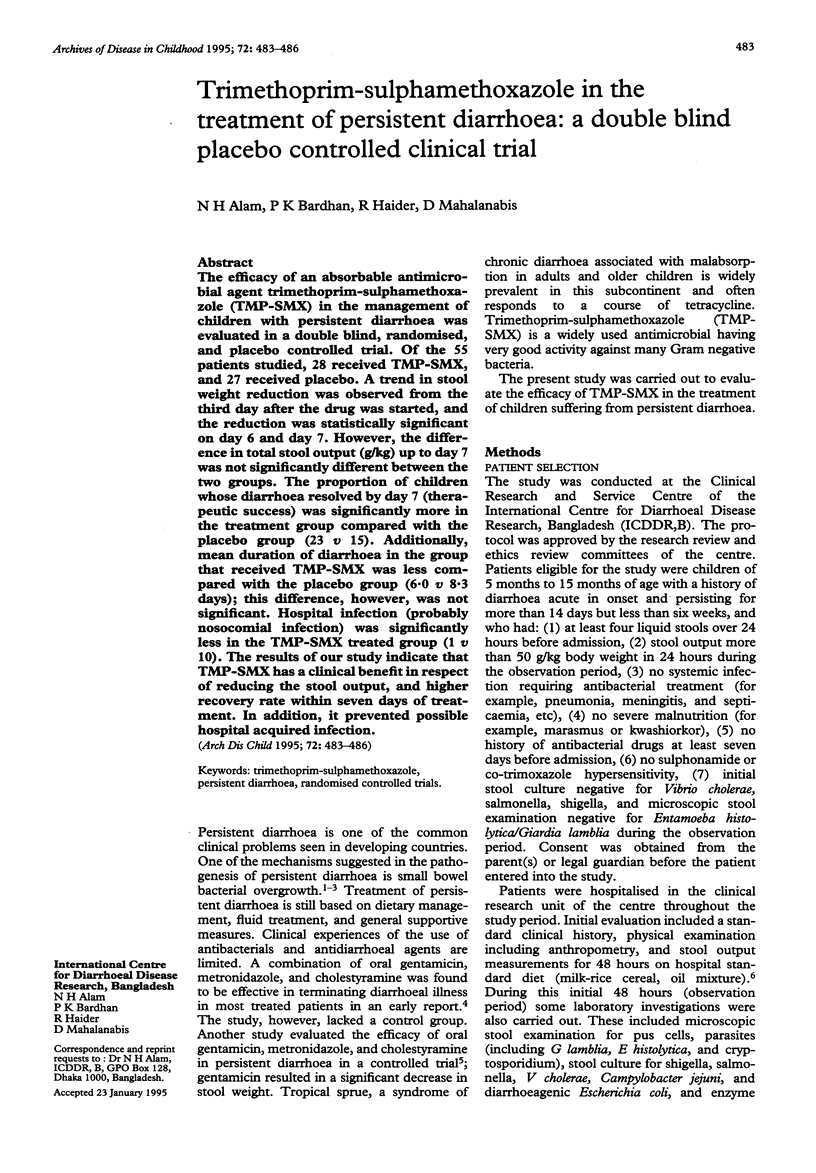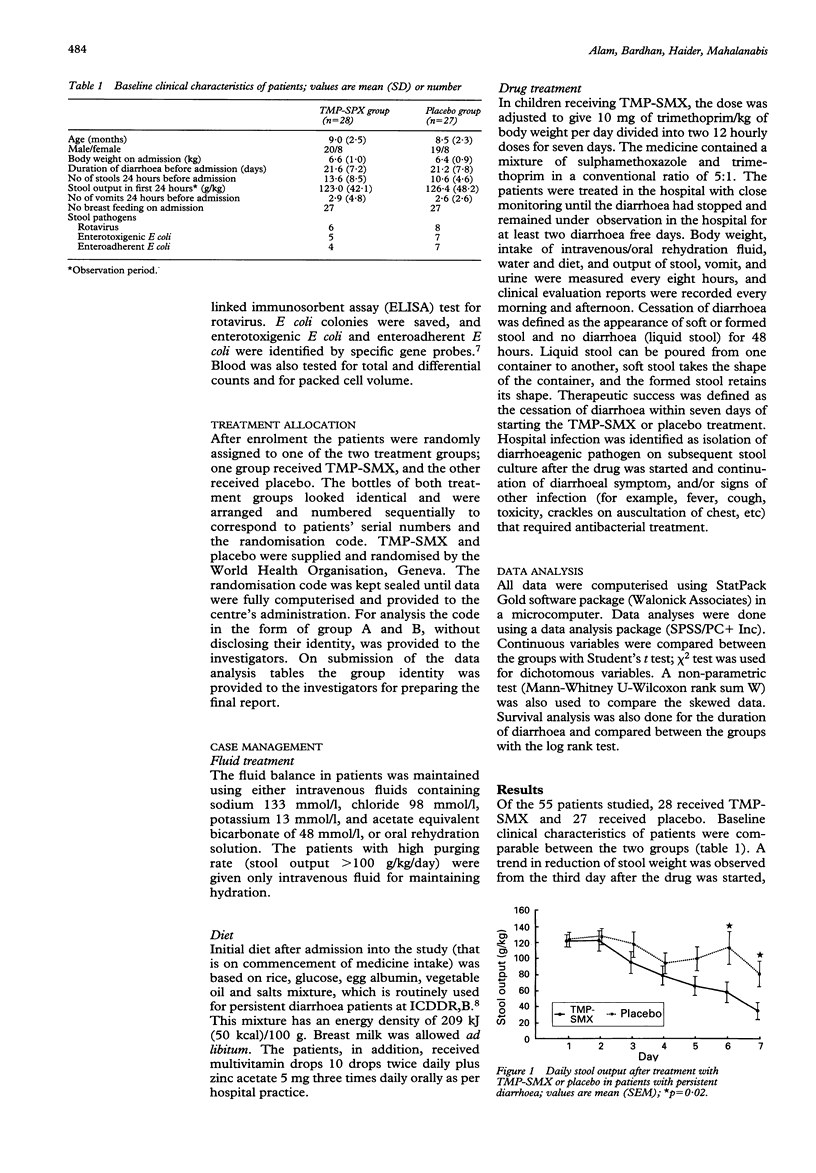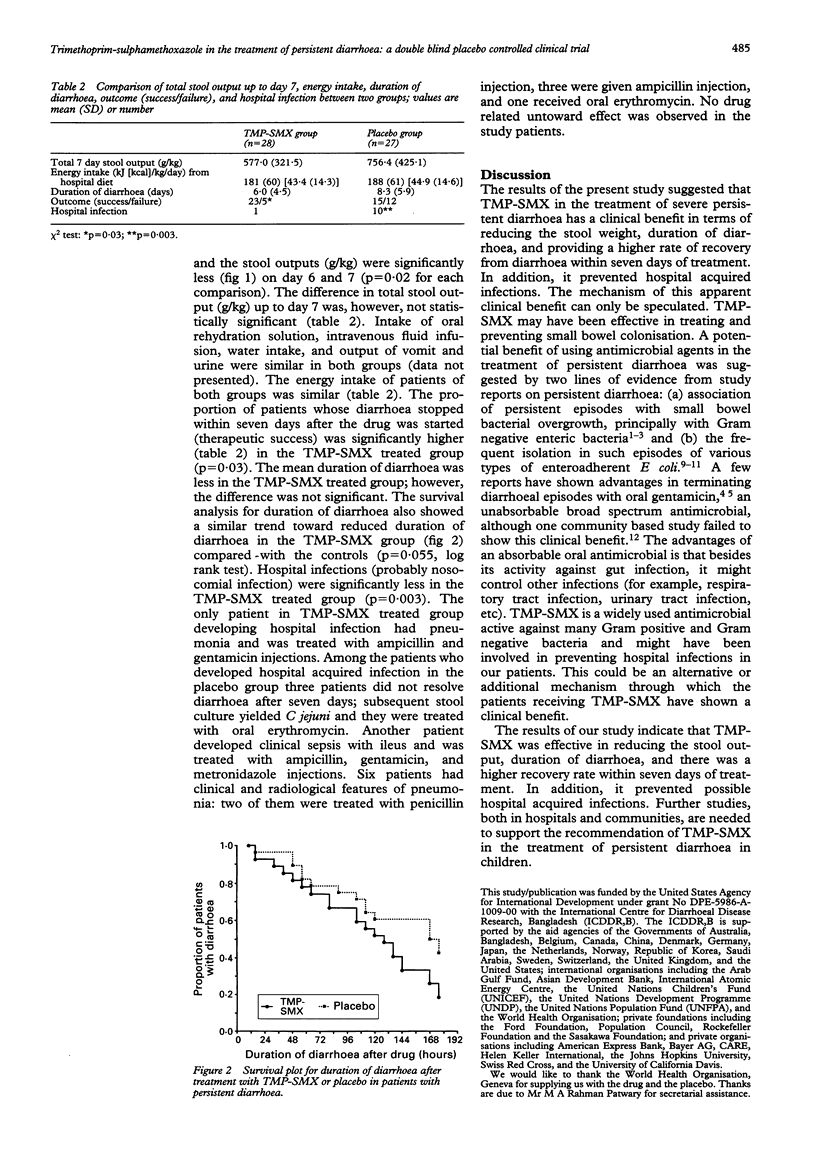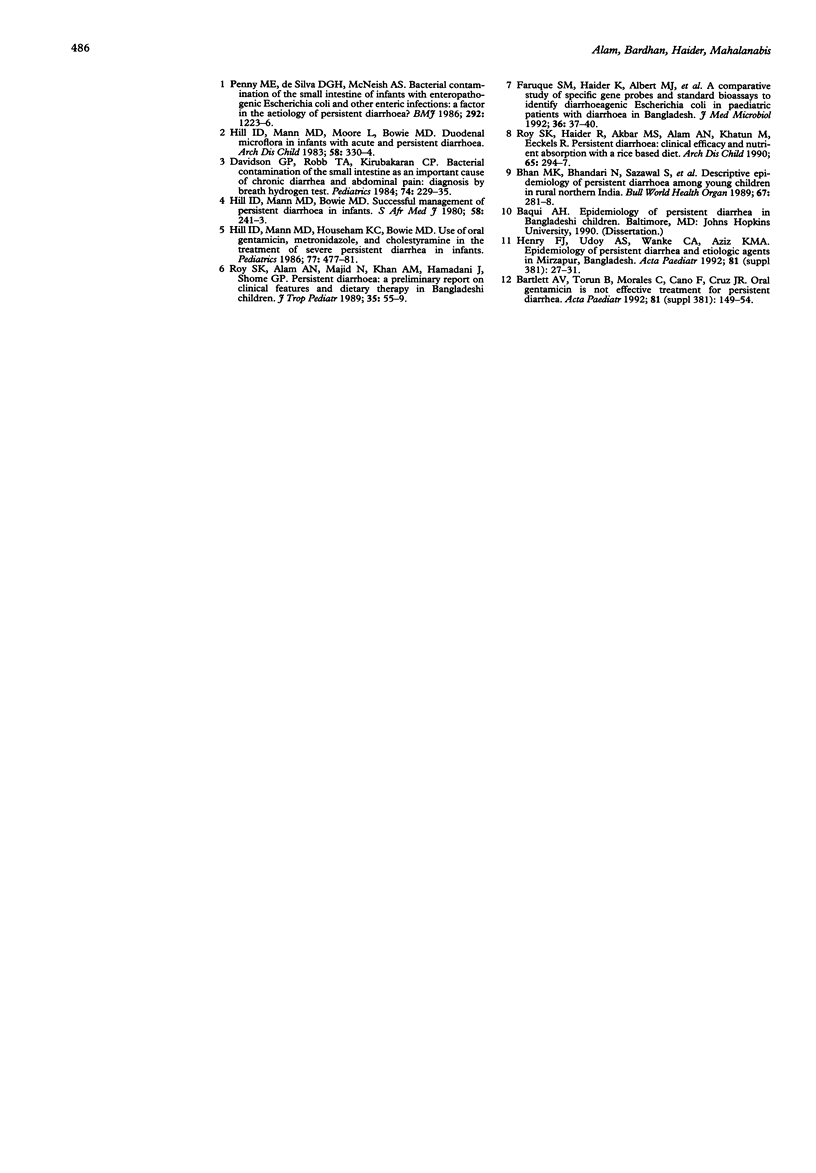Abstract
The efficacy of an absorbable antimicrobial agent trimethoprim-sulphamethoxazole (TMP-SMX) in the management of children with persistent diarrhoea was evaluated in a double blind, randomised, and placebo controlled trial. Of the 55 patients studied, 28 received TMP-SMX, and 27 received placebo. A trend in stool weight reduction was observed from the third day after the drug was started, and the reduction was statistically significant on day 6 and day 7. However, the difference in total stool output (g/kg) up to day 7 was not significantly different between the two groups. The proportion of children whose diarrhoea resolved by day 7 (therapeutic success) was significantly more in the treatment group compared with the placebo group (23 v 15). Additionally, mean duration of diarrhoea in the group that received TMP-SMX was less compared with the placebo group (6.0 v 8.3 days); this difference, however, was not significant. Hospital infection (probably nosocomial infection) was significantly less in the TMP-SMX treated group (1 v 10). The results of our study indicate that TMP-SMX has a clinical benefit in respect of reducing the stool output, and higher recovery rate within seven days of treatment. In addition, it prevented possible hospital acquired infection.
Full text
PDF



Selected References
These references are in PubMed. This may not be the complete list of references from this article.
- Bartlett A. V., Torun B., Morales C., Cano F., Cruz J. R. Oral gentamicin is not effective treatment for persistent diarrhea. Acta Paediatr Suppl. 1992 Sep;381:149–154. doi: 10.1111/j.1651-2227.1992.tb12390.x. [DOI] [PubMed] [Google Scholar]
- Bhan M. K., Bhandari N., Sazawal S., Clemens J., Raj P., Levine M. M., Kaper J. B. Descriptive epidemiology of persistent diarrhoea among young children in rural northern India. Bull World Health Organ. 1989;67(3):281–288. [PMC free article] [PubMed] [Google Scholar]
- Davidson G. P., Robb T. A., Kirubakaran C. P. Bacterial contamination of the small intestine as an important cause of chronic diarrhea and abdominal pain: diagnosis by breath hydrogen test. Pediatrics. 1984 Aug;74(2):229–235. [PubMed] [Google Scholar]
- Faruque S. M., Haider K., Albert M. J., Ahmad Q. S., Alam A. N., Nahar S., Tzipori S. A comparative study of specific gene probes and standard bioassays to identify diarrhoeagenic Escherichia coli in paediatric patients with diarrhoea in Bangladesh. J Med Microbiol. 1992 Jan;36(1):37–40. doi: 10.1099/00222615-36-1-37. [DOI] [PubMed] [Google Scholar]
- Henry F. J., Udoy A. S., Wanke C. A., Aziz K. M. Epidemiology of persistent diarrhea and etiologic agents in Mirzapur, Bangladesh. Acta Paediatr Suppl. 1992 Sep;381:27–31. doi: 10.1111/j.1651-2227.1992.tb12368.x. [DOI] [PubMed] [Google Scholar]
- Hill I. D., Mann M. D., Bowie M. D. Successful management of persistent diarrhoea in infants. S Afr Med J. 1980 Aug 9;58(6):241–243. [PubMed] [Google Scholar]
- Hill I. D., Mann M. D., Househam K. C., Bowie M. D. Use of oral gentamicin, metronidazole, and cholestyramine in the treatment of severe persistent diarrhea in infants. Pediatrics. 1986 Apr;77(4):477–481. [PubMed] [Google Scholar]
- Hill I. D., Mann M. D., Moore L., Bowie M. D. Duodenal microflora in infants with acute and persistent diarrhoea. Arch Dis Child. 1983 May;58(5):330–334. doi: 10.1136/adc.58.5.330. [DOI] [PMC free article] [PubMed] [Google Scholar]
- Penny M. E., Harendra de Silva D. G., McNeish A. S. Bacterial contamination of the small intestine of infants with enteropathogenic Escherichia coli and other enteric infections: a factor in the aetiology of persistent diarrhoea? Br Med J (Clin Res Ed) 1986 May 10;292(6530):1223–1226. doi: 10.1136/bmj.292.6530.1223. [DOI] [PMC free article] [PubMed] [Google Scholar]
- Roy S. K., Alam A. N., Majid N., Khan A. M., Hamadani J., Shome G. P. Persistent diarrhoea: a preliminary report on clinical features and dietary therapy in Bangladeshi children. J Trop Pediatr. 1989 Apr;35(2):55–59. doi: 10.1093/tropej/35.2.55. [DOI] [PubMed] [Google Scholar]
- Roy S. K., Haider R., Akbar M. S., Alam A. N., Khatun M., Eeckels R. Persistent diarrhoea: clinical efficacy and nutrient absorption with a rice based diet. Arch Dis Child. 1990 Mar;65(3):294–297. doi: 10.1136/adc.65.3.294. [DOI] [PMC free article] [PubMed] [Google Scholar]


